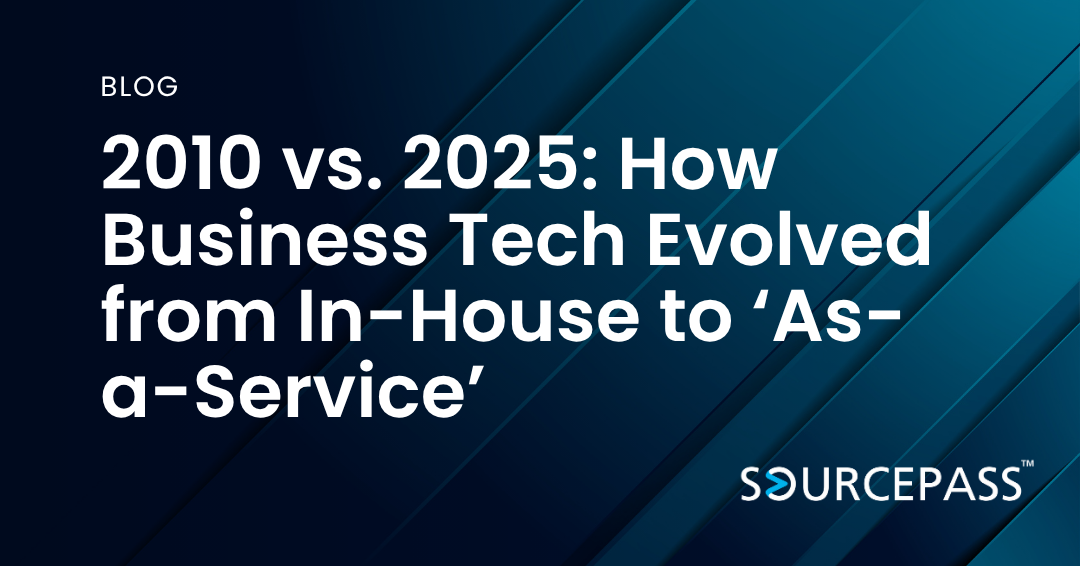2010 vs. 2025: How Business Tech Evolved from In-House to ‘As-a-Service’
Jun 12, 2025 Kyra Mindlin Technical Assessments IT Services 2 min read



Over the past 15 years, business technology has undergone a fundamental shift—from locally managed, hardware-heavy systems to flexible, subscription-based services.
In 2010, many organizations still relied on on-premises servers, physical phone systems, and installed software. Fast forward to 2025, and cloud-based platforms, remote infrastructure, and “as-a-service” models have redefined how businesses operate, collaborate, and compete.
This article explores how business technology has evolved from in-house models to scalable service-based ecosystems, with a side-by-side comparison of key functions including Voice, CRM, and IT infrastructure.
The Evolution of Business Technology: 2010 vs. 2025
|
Technology Function |
2010: In-House Approach |
2025: As-a-Service Approach |
|
Voice/Telephony |
PBX systems on-site, costly hardware, limited remote use |
VoIP & cloud-based UCaaS platforms, mobile-friendly, scalable |
|
CRM Systems |
On-premise CRM software, limited integrations, high upfront cost |
Cloud CRM (e.g., Salesforce, HubSpot), AI insights, pay-as-you-go |
|
File Storage |
Shared drives or NAS devices, limited access outside office |
Cloud storage (OneDrive, Google Drive), secure mobile access |
|
Workstations |
Fat clients with licensed software, inconsistent updates |
Virtual desktops, thin clients, automatic software patching |
|
IT Strategy |
Reactive, hardware-centric, siloed systems |
Strategic, data-driven, service-integrated, focused on outcomes |
|
Security |
Perimeter-based, antivirus only, manual patching |
Endpoint protection, MDR/XDR, compliance-ready security stacks |
|
Collaboration |
Email chains, local file versions, office-dependent |
Cloud collaboration (Teams, Slack, Google Workspace), real-time updates |
|
Support |
Internal IT staff with limited scope, manual processes |
Managed services (MSP), 24/7 monitoring, automated remediation |
Why the Shift Happened: Key Drivers
1. Cost and Efficiency
Businesses began to realize that owning and maintaining hardware was not only expensive but also inefficient. As-a-Service models eliminated large upfront investments and reduced total cost of ownership (TCO).
2. Scalability and Flexibility
Cloud-based services allow businesses to scale up or down quickly, support hybrid/remote workforces, and adapt to market changes without massive infrastructure upgrades.
3. Security and Compliance
Modern solutions are built with compliance in mind—HIPAA, SOC 2, GDPR, and more—offering better protection than legacy, on-prem systems maintained by limited in-house teams.
4. Workforce Expectations
Employees now expect fast, mobile-friendly, user-centric technology. Legacy systems hamper productivity and hurt talent retention.
5. Focus on Core Business
Maintaining infrastructure is not a competitive advantage for most firms. By outsourcing IT functions or shifting to SaaS platforms, businesses can focus on what they do best.
Case in Point: CRM and Customer Experience
In 2010, CRM software was often hosted on in-office servers, required internal support, and lacked real-time data visibility. Today, CRMs are integrated with marketing automation, customer support, and data analytics platforms—all cloud-based, mobile-ready, and continuously improved.
This change hasn’t just saved money—it’s transformed customer engagement and enabled personalization at scale.
The Future: Strategic Technology Planning
Looking ahead, businesses that treat IT as a strategic function, not just a support service, will be best positioned to grow. That means prioritizing:
- Technology lifecycle management
- Compliance-driven infrastructure
- Integrated business systems
- Cybersecurity-as-a-service
- Continuous improvement and innovation
Is Your Technology Strategy Stuck in 2010?
Let Sourcepass Help!
It might be time for a modern IT roadmap designed around your business goals—not outdated infrastructure.
The journey from 2010 to 2025 shows a clear trend: businesses are no longer interested in owning tech—they’re interested in outcomes. The rise of “as-a-service” models for voice, CRM, infrastructure, and cybersecurity reflects a larger shift toward agility, resilience, and strategic alignment.

